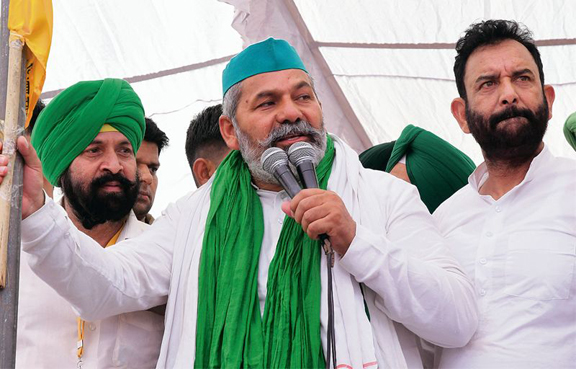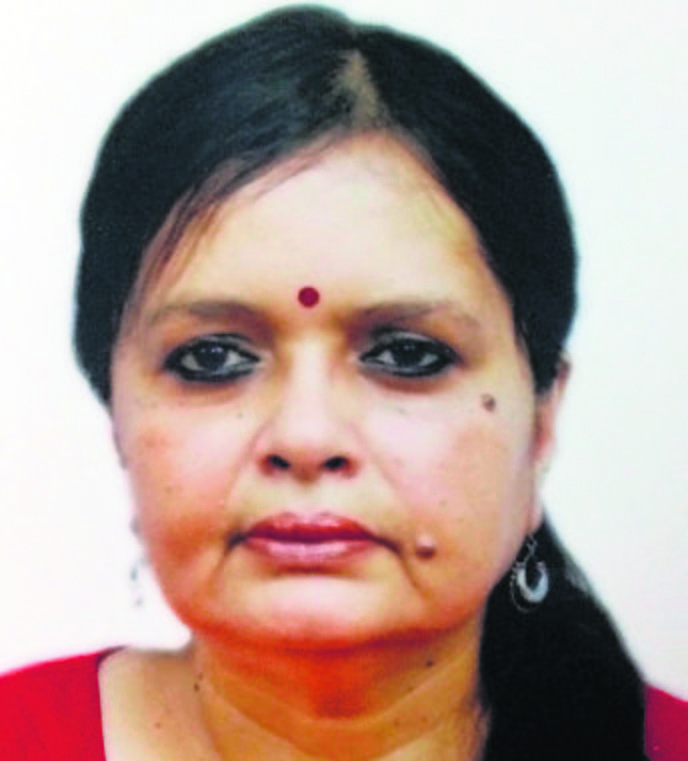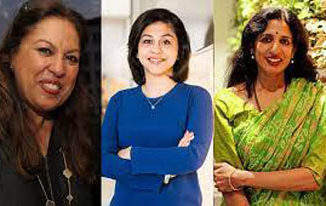
Smaller players may hold the key this time in poll-bound state

“The mowing down of four protestors, whose only ‘crime’ was to wave black flags before a UP minister signified a low in the ongoing agitation. Not only has the unrest spilled from the west to Avadh in central UP, the issues have gone beyond the refusal to ratify the Centre’s farm ‘reforms’ and the state government’s small one-time payment hike for sugarcane growers to the rise in agricultural inputs, power tariffs, uneven irrigation facilities and the continuous preying on fields and standing crops by rogue cattle. The range of issues affects every farmer, big, marginal and small. No longer is the agitation about the ‘prosperous’ sugar-cane Jat farmers of the west. It spans the peasants in the other districts, cutting across caste and class divisions. Against such a fluid backdrop, Tikait’s role will be closely monitored by the SKM as well as the Opposition to see if he gets closer to the BJP or whether his engagement with Adityanath and his apparatchiks was a limited one.”
The brutality and horror of Lakhimpur Kheri, marked by a callous Central regime, a slippery UP Government which survives on chicanery and repression, and an Opposition that arose belatedly from sleepwalking, brought other twists and turns to the state’s politics as well before the elections. An interesting aspect that emerged was the unpredictability of the smaller players, who have not yet launched their parties, as well as the minor political entities who punch above their weight, giving the impression that they are more sought after by the mainline parties this time. One of them is Rakesh Tikait, the BKU spokesperson, who was thrust into the spotlight once the farmers’ protest picked up steam in west UP, his home ground.
Where does Lakhimpur Kheri fit into this jumbled picture? It does, if only farmers form a cohesive federation based on their economic interests and not caste allegiances.
Tikait wore his celebrity-hood with assumed reluctance, as though his head felt heavy wearing the crown, although he savored every moment of the attention he drew from politicians and the media. If he had political ambitions that were blown away in the past because he lacked conviction in the cause he supposedly espoused, this time he did not reveal a thing. Sanjeev Balyan, the MP from Muzaffarnagar, tempted Tikait to float a party when the BJP, Balyan’s party, was in hot water. Tikait didn’t bite the bait but he possibly did a bigger favor to the BJP and the Yogi Adityanath government when he accepted the brief to mediate and quell tensions in Lakhimpur Kheri after the farmers’ killings and the reprisals. Tikait partially delivered on the mandate set by the CM but probably lost face among his colleagues in the Samyukt Kisan Morcha (SKM), who span the ideological circumference from the left to the center and right of center.
The mowing down of four protestors, whose only ‘crime’ was to wave black flags before a UP minister signified a low in the ongoing agitation. Not only has the unrest spilled from the west to Avadh in central UP, the issues have gone beyond the refusal to ratify the Centre’s farm ‘reforms’ and the state government’s small one-time payment hike for sugarcane growers to the rise in agricultural inputs, power tariffs, uneven irrigation facilities and the continuous preying on fields and standing crops by rogue cattle. The range of issues affects every farmer, big, marginal and small. No longer is the agitation about the ‘prosperous’ sugar-cane Jat farmers of the west. It spans the peasants in the other districts, cutting across caste and class divisions. Against such a fluid backdrop, Tikait’s role will be closely monitored by the SKM as well as the Opposition to see if he gets closer to the BJP or whether his engagement with Adityanath and his apparatchiks was a limited one.
What accounts for the salience of once peripheral individuals like Tikait? The state Opposition lay dormant for the better part of Adityanath’s tenure, although issues came thick and fast. No Opposition leader raised his or her voice, fueling a perception that they were nonchalant, scared of a counterstroke if they spoke aloud, or risked alienating the Hindus of UP. The last factor was premised on a belief that Hindus had voted almost en bloc for the BJP since the 2014 Lok Sabha elections and the leader in saffron robes who presides over North India’s richest monastic order in Gorakhpur consolidated his position as the new ‘monarch of the Hindu heart’.
On the ground, people, Hindus and Muslims, Jat, Yadav, Saini and Dalit, rich, middle-class and poor, urban and rural, had reasons to not just worry but despair. The Opposition was not around to tap the sentiments and funnel them into a movement against the establishment. When the winds of an agrarian uprising blew from Punjab and Haryana to UP, the farmers of the west divined the potential to vent their problems and organized themselves, almost spontaneously. The BKU, and later the RLD, headed by Jayant Chaudhary, were default beneficiaries of the signals beamed from Punjab and Haryana and not the catalysts. It’s a reflection of popular desperation and disillusionment that people were ready to resurrect a has-been like Tikait.
If indeed the impending contest is bilateral and not multi-polar as in the recent past, why is a politician like Om Prakash Rajbhar — courted, co-opted, dumped and wooed again by the BJP — hot property? Om Prakash, who represents the backward caste Rajbhars, tried to band together the most backward and extremely backward castes as well as Muslims into an umbrella outfit called the Bhagyadari Sankalp Morcha (BSM). The BJP was partially successful in attracting some of these castes into its fold since 2014. However, Adityanath, who allegedly carried his patronage of the Rajputs, the caste to which he belongs, to inordinate lengths, might have antagonized not just the Brahmins but the backward castes too. Om Prakash was approached not by Adityanath but state BJP leaders whose only pre-condition to him was excluding Asaduddin Owaisi’s All India Majlis-e-Ittehadul Muslimeen from his front. Om Prakash indicated that he would reveal his roadmap at a mahapanchayat in east UP on October 27. Simultaneously, the Samajwadi Party that has positioned itself as the BJP’s direct rival is soliciting the support of parties which addressed specific castes to widen its backward caste base.
Where does Lakhimpur Kheri fit into this jumbled picture? It does, if only UP’s farmers form a cohesive federation, underpinned by their economic interests and not caste allegiances. It nearly happened in Madhya Pradesh in the 2018 elections. Will MP repeat itself in UP?
(The author is a senior journalist)





Be the first to comment